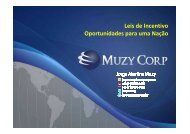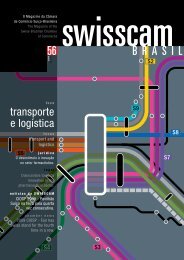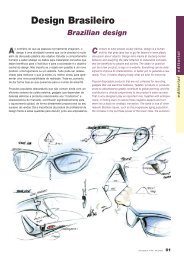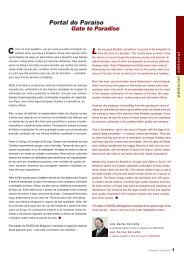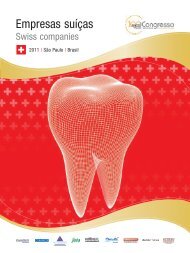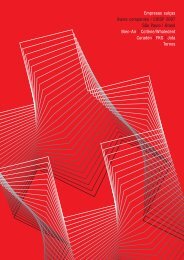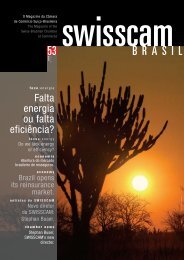Ed 31 - Swisscam
Ed 31 - Swisscam
Ed 31 - Swisscam
Create successful ePaper yourself
Turn your PDF publications into a flip-book with our unique Google optimized e-Paper software.
economia brasileira<br />
brazilian economy<br />
2003:<br />
Brazil<br />
under<br />
Lulalight<br />
How will the Lula administration look?<br />
The "softer" profile of the center, moderate in<br />
tone, conciliatory, that emerged during the election<br />
campaign? Or the radical left, combative, in<br />
favor of divisive solutions - so long the keynote cry<br />
by the PT (Workers Party)?<br />
by Rodrigo Azevedo<br />
T<br />
his is now the key question in evaluating<br />
scenarios for Brazil in the<br />
medium and long term. We expect to see<br />
it answered in the coming months, through<br />
the new administration’s actions and<br />
appointments during the transition period.<br />
Recent signs indicate that the PT will seek<br />
to establish a moderate profile. However,<br />
the transition period until the swearing-in<br />
in January, will offer several opportunities<br />
for Lula to gain confidence from investors<br />
on this light and moderate profile.<br />
Factors to focus on will be: (1) the profile<br />
of the cabinet members, in particular the<br />
names of the economic team, to be announced<br />
in early December; (2) the formation<br />
of the political base in Congress;<br />
(3) progress on the congressional agenda<br />
- in particular, regulation of the financial<br />
system, independence for the Central<br />
Bank, votes on the 2003 budget, the percentage<br />
adjustment to the minimum wage,<br />
and to wages of government workers,<br />
and (4) the PT government’s position on<br />
a potentially dangerous subject: debate<br />
on renegotiation of contracts for the debt<br />
owed by the state and municipalities to<br />
the federal government. This is a quicksand<br />
that could seriously weaken one of<br />
the pillars of the recent fiscal responsibility<br />
in Brazil.<br />
Another major test should be the new<br />
administration's position on negotiations<br />
with the IMF. An IMF mission recently<br />
visited Brazil to collect data for the first<br />
It will be difficult to sustain<br />
this "light" stance politically<br />
amidst an adverse environment<br />
of low growth, high unemployment<br />
and inflation pressures<br />
revision of the Brazilian program, with a<br />
view to release a US$3bn tranche. Since<br />
the macroeconomic variables involved in<br />
the program have behaved more adversely<br />
than expected, the resulting rise in<br />
the net debt/GDP ratio, and in inflation<br />
expectations, would recommend a<br />
tightening of fiscal and monetary policy.<br />
As monetary tightening is already in<br />
progress, the key discussion will be the<br />
need to increase the primary surplus<br />
target for 2003. It is likely that these<br />
negotiations will really be ended, though<br />
only during the second review of the<br />
IMF/Brazil program, in early February.<br />
The main thermometer for the restoration<br />
of confidence will be the path of the exchange<br />
rate. At its R$ 3.90/US$ level of<br />
October, the Real was undervalued by<br />
about 51% in real terms relative to its<br />
average for the last 3 years, and this<br />
helped to re-ignite fears of a return of<br />
inflation, and restructuring of public debt.<br />
If the light profile for the Lula government<br />
is confirmed, this could mitigate the pressures<br />
on capital flows, leading to a modest<br />
4 <strong>Swisscam</strong> nº<strong>31</strong> 01/2003




